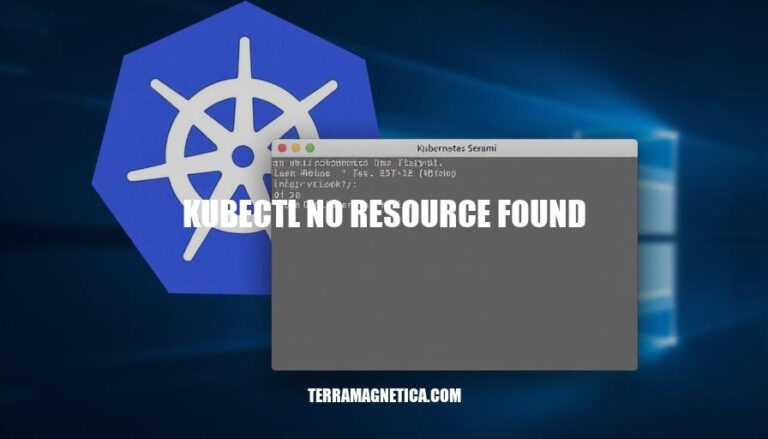


The ‘kubectl no resource found‘ error occurs in Kubernetes environments when a user attempts to retrieve resources (like pods, services, or deployments) that do not exist in the specified namespace or cluster context. This error is significant as it often indicates issues such as incorrect resource names, misconfigured namespaces, or connectivity problems with the Kubernetes cluster. Understanding and resolving this error is crucial for maintaining the smooth operation and management of Kubernetes applications.
The ‘kubectl no resource found’ error typically appears in the following situations:
These scenarios often require checking the namespace, context, and resource names to resolve the issue.
Sure, here are the detailed steps to diagnose and resolve the ‘kubectl no resource found’ error:
Check Resource Existence:
kubectl get <resource-type> to list resources of the specified type.pods, services, deployments).Verify Namespace:
kubectl get <resource-type> -n <namespace> to check resources in a specific namespace.kubectl get namespaces to list all namespaces.kubectl config set-context --current --namespace=<namespace>.Ensure Correct Context Usage:
kubectl config current-context to check the current context.kubectl config use-context <context-name>.~/.kube/config or by running kubectl config view.Check for Typos:
Check Cluster Connectivity:
kubectl cluster-info to verify cluster information.Review Role-Based Access Control (RBAC):
kubectl get roles and kubectl get rolebindings.Inspect Logs and Events:
kubectl logs <pod-name>.kubectl get events to see if there are any related issues.Following these steps should help you diagnose and resolve the ‘kubectl no resource found’ error effectively.
Here are some best practices to avoid encountering the ‘kubectl no resource found’ error:
Proper Resource Management:
kubectl get all to list all resources in the current namespace.Namespace Organization:
-n flag, e.g., kubectl get pods -n my-namespace.contexts:
- context:
cluster: my-cluster
user: my-user
namespace: my-namespace
name: my-context
Context Configuration:
kubectl config use-context my-context.kubectl config get-contexts.Check Kubeconfig:
kubectl config view to inspect it.KUBECONFIG environment variable:export KUBECONFIG=$HOME/.kube/config:$HOME/.kube/config2
Resource Type and Name:
By following these practices, you can minimize the chances of encountering the ‘kubectl no resource found’ error and ensure smoother Kubernetes operations.
The ‘kubectl no resource found’ error occurs in Kubernetes environments when resources do not exist, are in incorrect namespaces, or have misconfigured contexts. To resolve this issue, check the namespace, context, and resource names.
Check resource existence
Verify namespace
Ensure correct context usage
Check for typos
Check cluster connectivity
Review Role-Based Access Control (RBAC)
Inspect logs and events
Proper resource management
Namespace organization
Context configuration
Checking kubeconfig
Ensuring accurate resource type and name